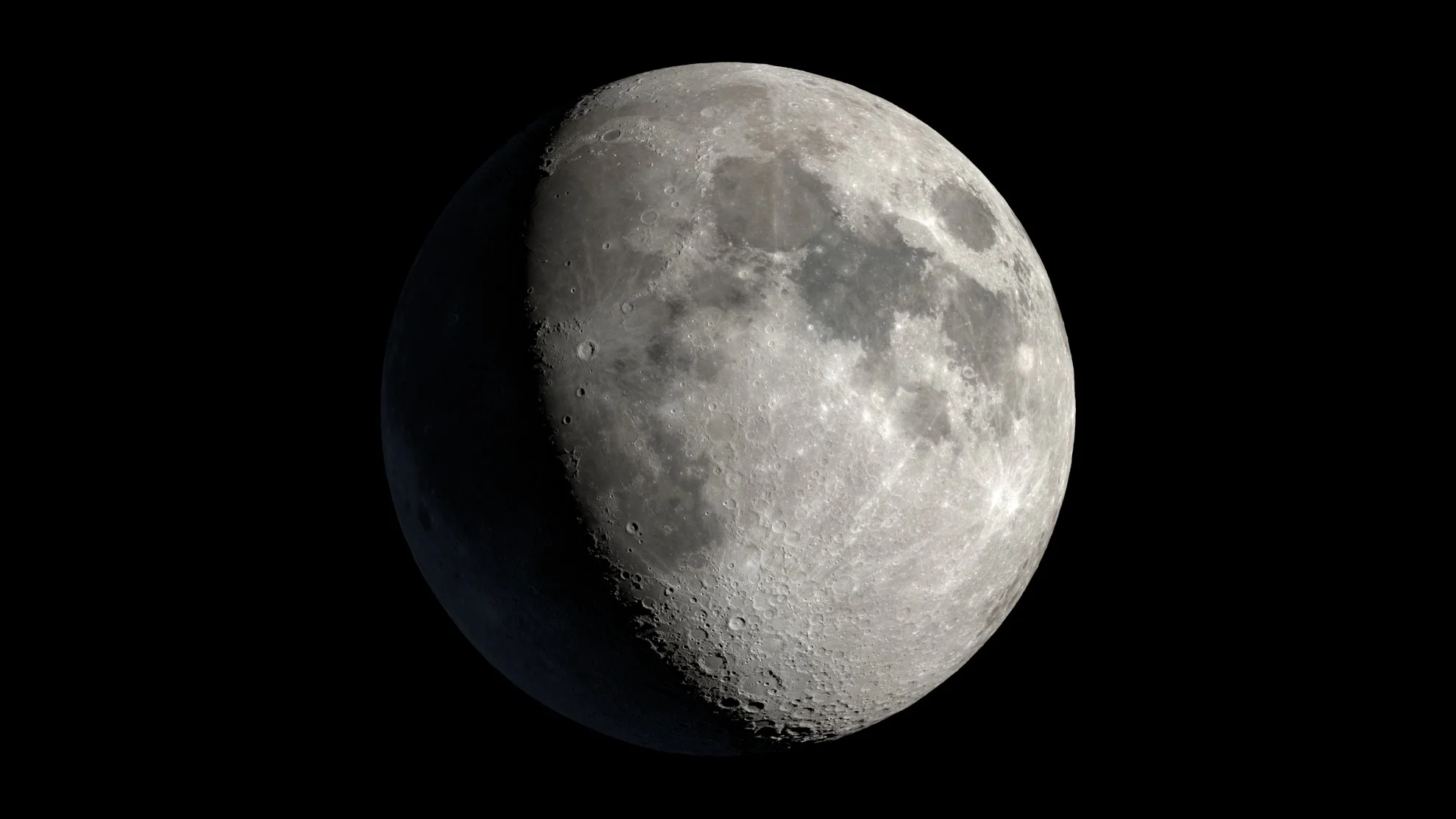
Earth's shrinking Moon adds a new concern for NASA's Artemis missions
Artemis III astronauts landing near the lunar south pole could face dangers due to powerful moonquakes.
As NASA prepares for Artemis III to land on the Moon in 2026, there are technological challenges to overcome prior to the mission's launch. However, a new study shows how the Moon itself is throwing some complications into the mix, when it comes to picking a safe spot for the astronauts to land.
Earth's Moon is shrinking. It hasn't been by much, mind you. Due to the cooling and contraction of its core, the Moon's 10,900+ kilometre circumference has shrunk by about 50 metres over the past few hundred million years or so. Still, even that small amount has been enough to cause the surface to fracture, resulting in active seismic fault lines that can produce significant moonquakes.
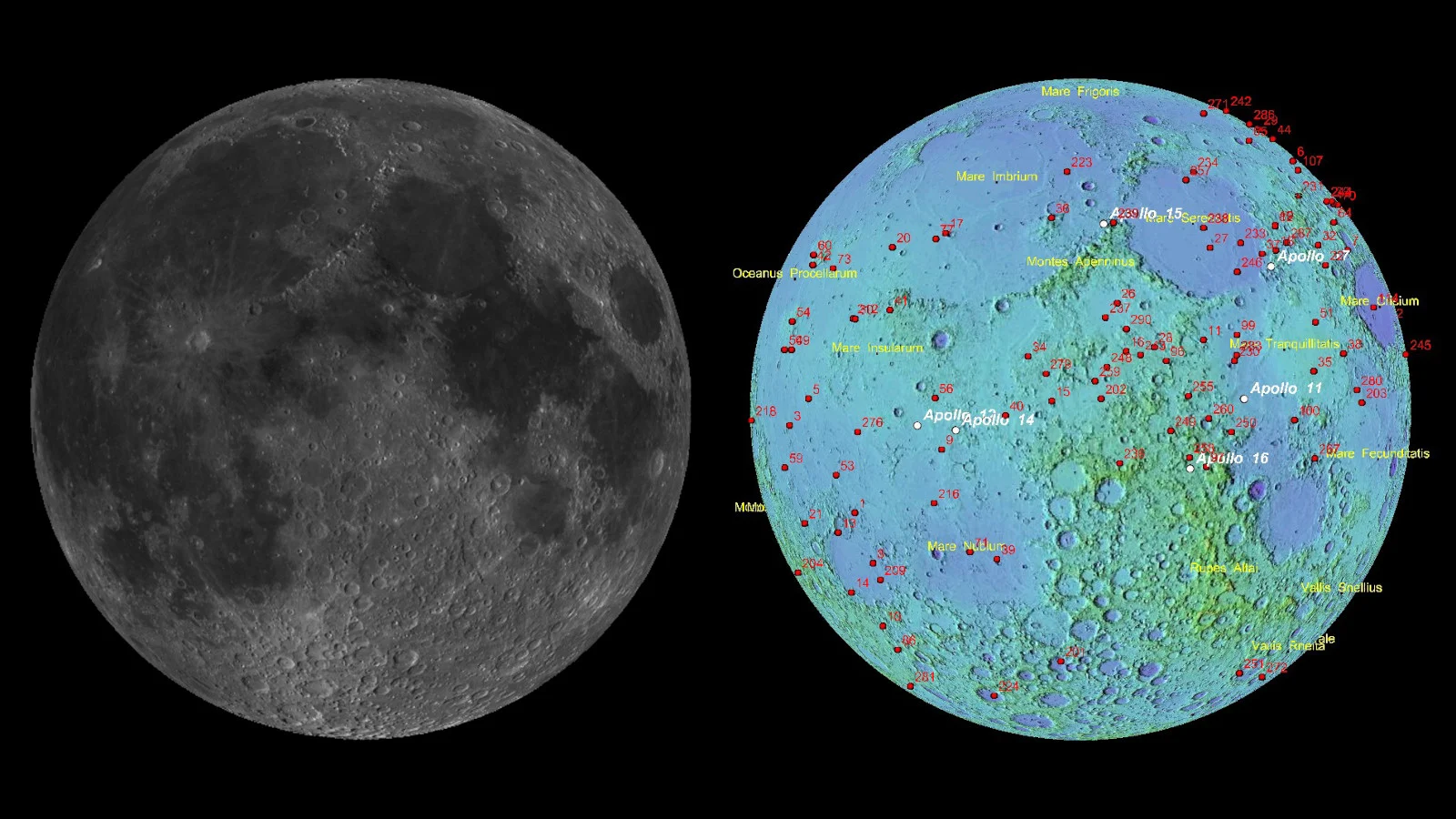
The locations of dozens of moonquake clusters detected by Apollo mission seismometers are plotted on a topographical map of the Moon (right). Roughly 13,000 moonquakes were detected between 1969 and 1977. Credits: NASA LRO (left), NASA/USGC/Nakamura (right)
We've known about moonquakes for over 50 years now. They were first recorded by seismometers left on the lunar surface by the Apollo missions in the late 1960s and early 1970s. Before they were remotely shut down in 1977, these instruments catalogued roughly 13,000 tremors — some caused by meteorite impacts, others by the Sun heating up the surface as it rises after the 28-day lunar night, and the deepest are probably a result of tidal forces due to Earth's gravity. Nearly all of those recorded were fairly mild compared to those we can experience here on Earth.
However, over two dozen were recorded in that time that ranked as far more significant. These were shallow moonquakes, resulting from fractures in the surface due to the shrinkage of the Moon, that reached up to magnitude 5.7 and could shake for up to an hour at a time.
One such shallow moonquake, now known as the N9 event, was detected on March 13, 1973, and should be a warning sign to NASA as they plan the Artemis III mission for 2026.
NASA's goal for Artemis III is to fly four astronauts out to the Moon, have them land near the lunar south pole, and then return them safely to Earth. In total, they are looking at 13 potential landing sites for the mission. Which site is chosen will depend on what kinds of resources they may find — especially water ice — but also how safe it is to land there.
However, when a team of researchers used a new computer model to locate the epicenter of the N9 event, they found that the region it originated from overlaps with nearly half of those potential landing sites.
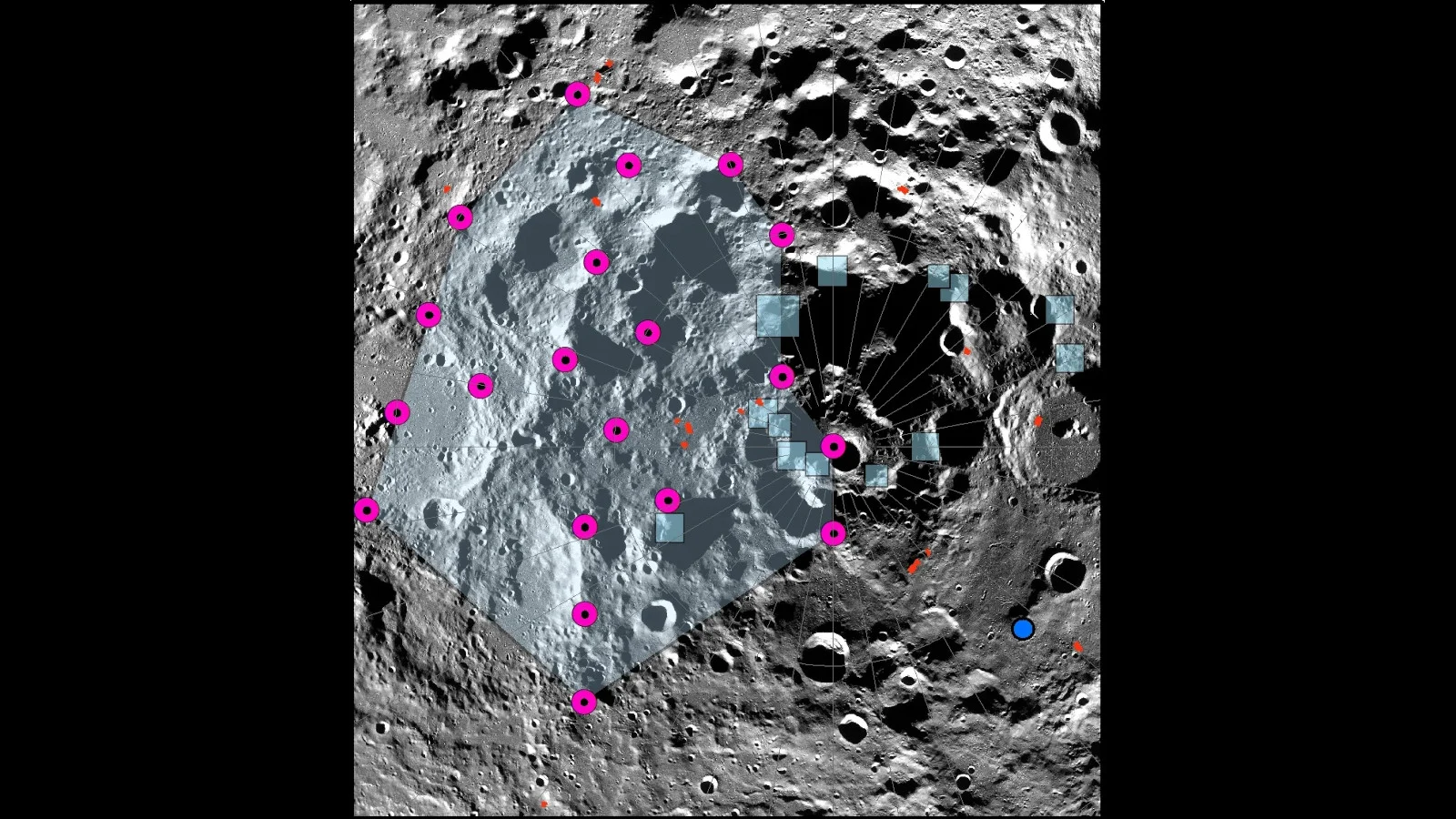
The magenta dots on this LRO image of the lunar south pole are the possible epicenter points of the N9 event. The shaded area that encompasses this cluster of possible epicenters covers nearly half of the potential Artemis III landing sites. Credit: NASA/LROC/ASU/Smithsonian Institution
"Our modelling suggests that shallow moonquakes capable of producing strong ground shaking in the south polar region are possible from slip events on existing faults or the formation of new thrust faults," Tom Watters, the lead researcher of the study from the Smithsonian Institution, told NASA.
"The global distribution of young thrust faults, their potential to be active and the potential to form new thrust faults from ongoing global contraction should be considered when planning the location and stability of permanent outposts on the moon," Watters advised.
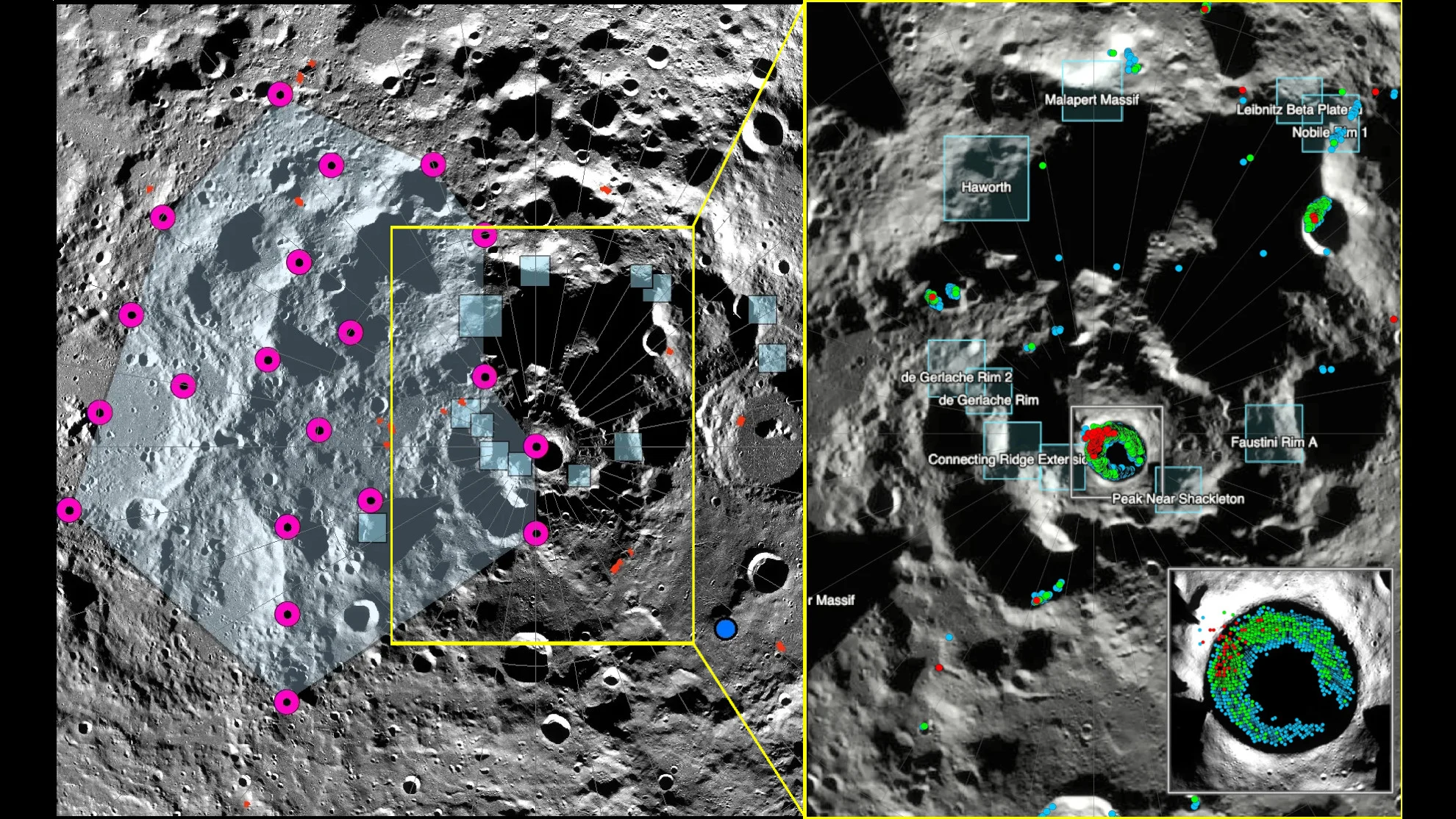
Here, a map of potential crater slope instability has been added to the N9 event epicenter map, showing how much of the interior of Shackleton Crater (a key location where we may find water ice deposits) could become unstable should a similar moonquake occur. Credit: NASA LRO/Watters, et al., 2024
And there are thousands of these young seismic faults on the Moon.
During its first 10 years of operation, from 2009 to 2019, NASA's Lunar Reconnaissance Orbiter spotted around 3,500 relatively recent fault lines in the lunar surface, all caused by the Moon's continued shrinking. Researchers examining the LRO imagery even spied evidence of landslides, as well as tracks left by large boulders rolling down slopes, as a result of activity along these faults.
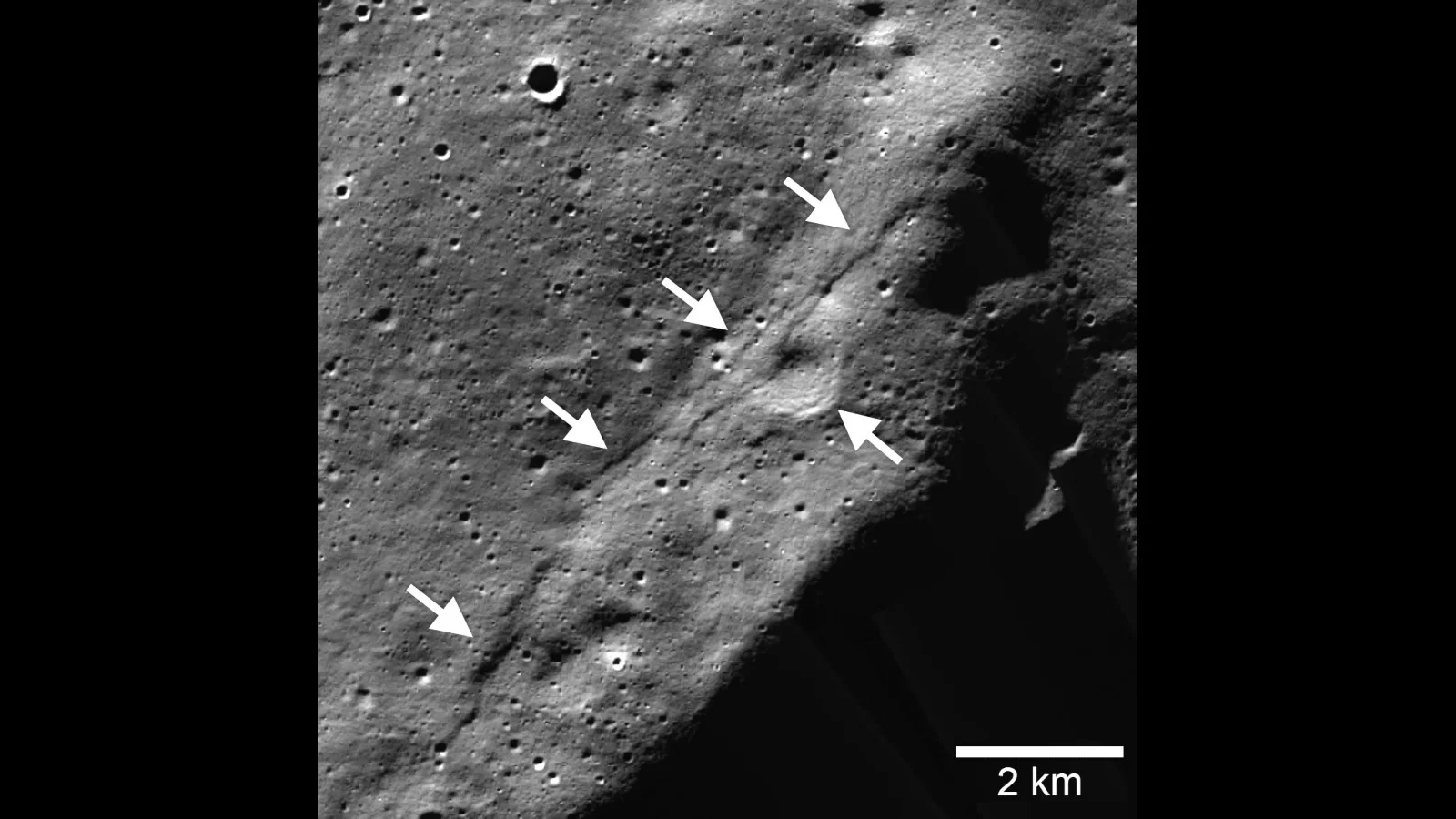
This LRO image reveals formations known as 'scarps' near the lunar south pole. These scarps are cliff-like landforms that resemble small stair-steps on the lunar surface. They form due to the lunar surface contracting and breaking, with one side of the fault being forced up and over the other side. Credit: NASA/LRO/LROC/ASU/Smithsonian Institution
According to Nicholas Schmerr, a co-author of the study from the University of Maryland, the Moon's surface is mostly gravel and dust, with the materials being reworked by impacts of asteroids and comets over billions of years.
"As a result, the reworked surface material can be micron-sized to boulder-sized, but all very loosely consolidated," Schmerr said. "Loose sediments make it very possible for shaking and landslides to occur."
This sort of concern hasn't been very important over the past 50 years. It's always been some far-in-the-future concern that was worth considering, at least, but not really something that needed to occupy too much of our time.
However, we're now less than three years from when the next humans are supposed to be walking around on the Moon. Thus, as NASA works towards finalizing their plans for Artemis III, they will need to keep this new moonquake map in mind.
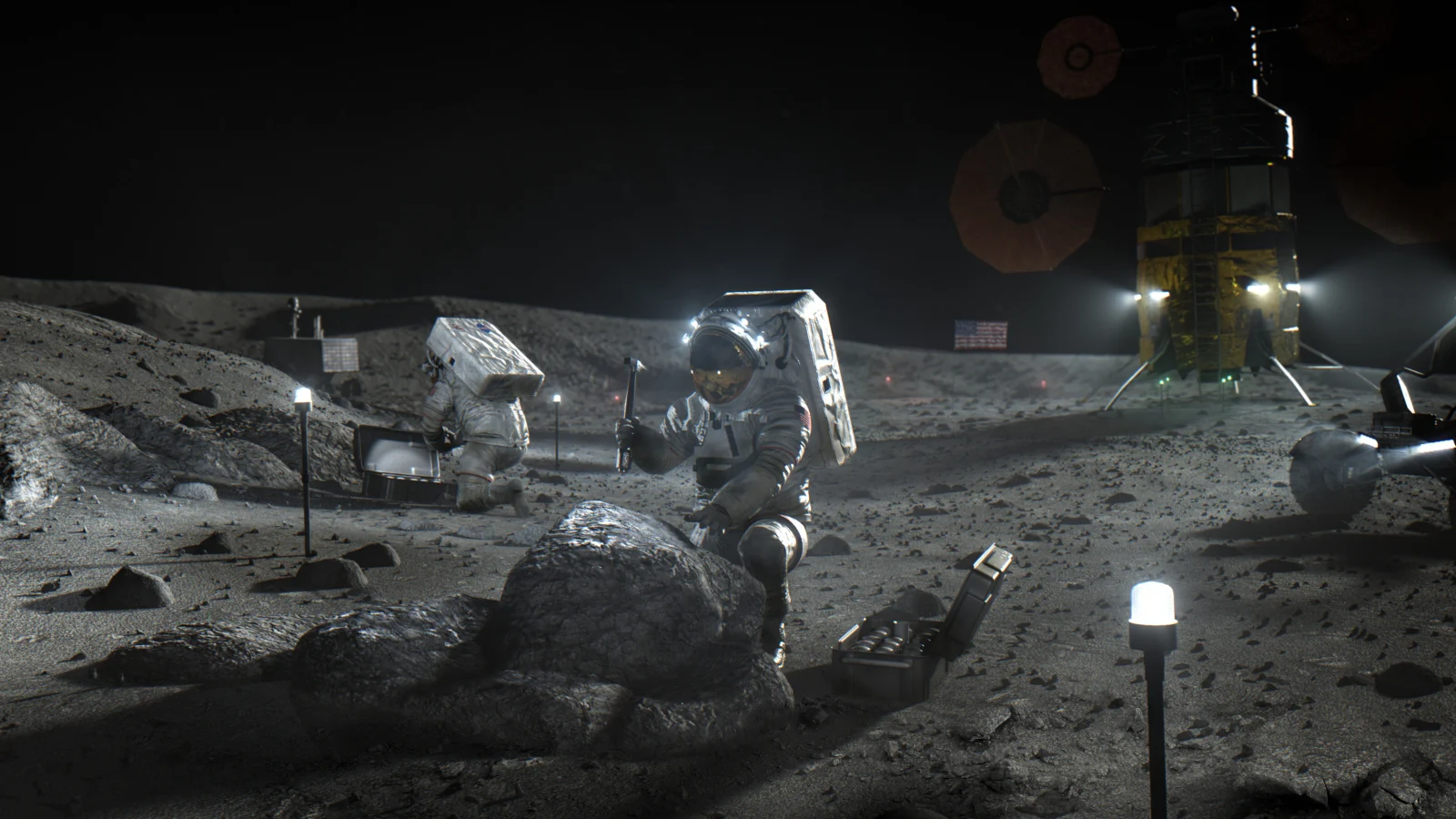
This artist's rendition shows Artemis III astronauts working on the surface of the Moon. Credit: NASA
Simply relocating Artemis III to some other region of the Moon really isn't an option. It comes down to the importance of the lunar south pole for the future of space exploration.
Due to the extreme angle of the sunlight that reaches that area of the lunar surface, there are craters and valleys that are in permanent darkness. And in those perpetually shadowed areas, satellites and telescopes have spotted evidence of water.
If these turn out to be actual deposits of ice buried under a thin layer of lunar dust, it could be a source of drinking water and oxygen for habitats on the surface and in orbit. That would be crucial for long-term human missions to the Moon, as it would reduce the amount of resources that were needed from Earth. It could also be used to make fuel, to propel human missions from the Moon into deep space.

The Moon's south pole, as imaged by the Lunar Reconnaissance Orbiter. The blue shaded regions are those where sunlight never reaches, even as the lit portion of the Moon rotates around the south pole. Credit: NASA Goddard/LRO mission
The safety of the Artemis crews is of paramount importance. So, that consideration will no-doubt guide NASA into choosing the best option for the Artemis III landing site. However, what happens if the richest sources of water ice happen to be in those moonquake-prone regions?
Having more data on lunar seismic activity would be of great benefit for making this decision. India's Chandrayaan-3 lunar lander could assist with this from its location near the south pole. Sending more seismometers to the Moon on new robotic missions would help even more.
"To better understand the seismic hazard posed to future human activities on the Moon, we need new seismic data, not just at the South Pole, but globally," Renee Weber, a co-author of the paper at NASA's Marshall Space Flight Center, said in the NASA press release. "Missions like the upcoming Farside Seismic Suite will expand upon measurements made during Apollo and add to our knowledge of global seismicity."











